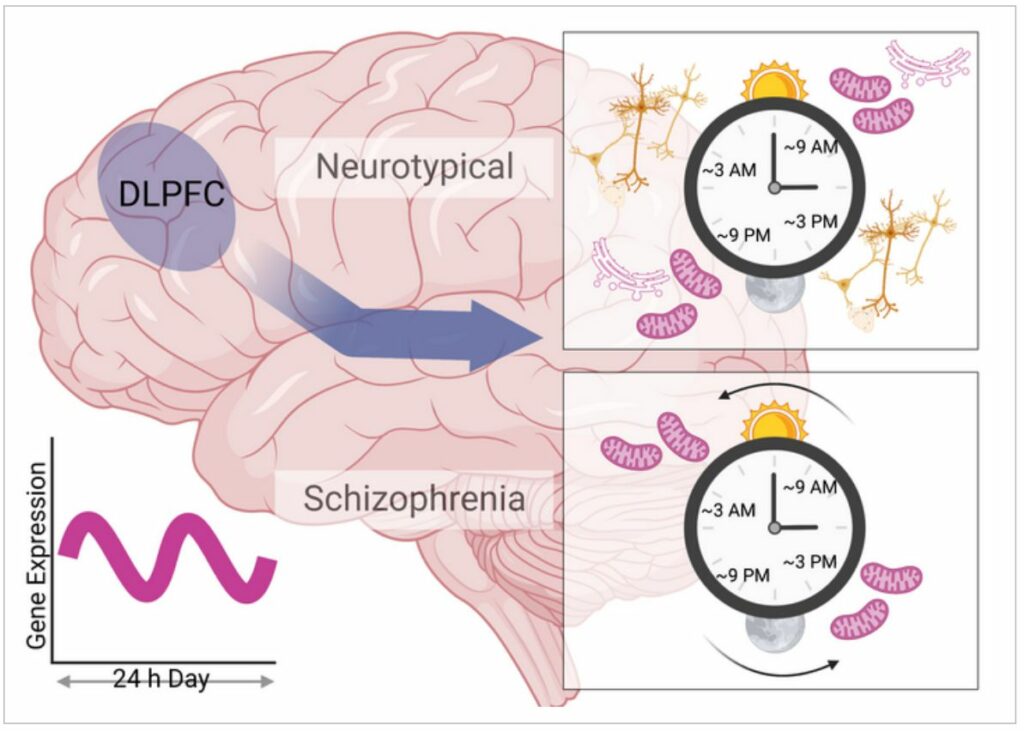Individuals diagnosed with schizophrenia often experience disruptions in their daily bodily rhythms, including sleep patterns, hormone levels, and gene activity in the prefrontal cortex of the brain.
However, there is limited understanding of gene activity in the brain, both in those with schizophrenia and in healthy individuals, for cycles shorter than the typical 24-hour circadian rhythm.
To investigate this, the current study used post-mortem analysis to investigate 12-hour rhythms in gene activity, as measuring gene transcript levels in living brains is not possible.
The researchers concentrated on the dorsolateral prefrontal cortex as it is connected with cognitive symptoms and other abnormal gene expression rhythms that are seen in schizophrenia.
They found several genes in the normal dorsolateral prefrontal cortex that have 12-hour rhythms in activity. Gene activity levels linked to forming connections between neurons were highest in the afternoon and evening, while those linked to mitochondrial function (and subsequently cellular energy supply) were highest in the morning and evening.

Postmortem brains from schizophrenia patients, on the other hand, had no genes associated with neural connections and fewer genes with 12-hour activity cycles.
Furthermore, although the mitochondria-related genes did have a 12-hour rhythm, their activity did not peak at the expected times.
“We find that the human brain has not only circadian (24 hour) rhythms in gene expression,” points out co-author Colleen A. McClung, “but also 12-hour rhythms in a number of genes that are important for cellular function and neuronal maintenance.”
“Many of these gene expression rhythms are lost in people with schizophrenia, and there is a dramatic shift in the timing of rhythms in mitochondrial-related transcripts which could lead to suboptimal mitochondrial function at the times of day when cellular energy is needed the most.”
Image Credit: Getty
